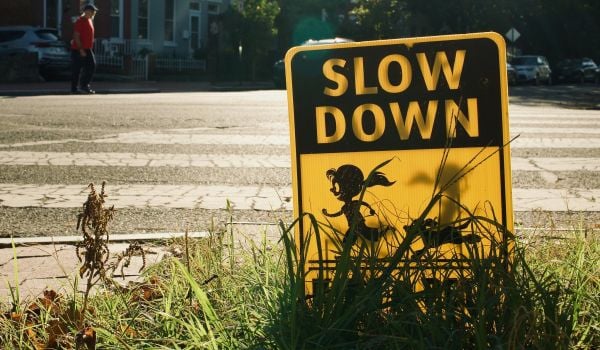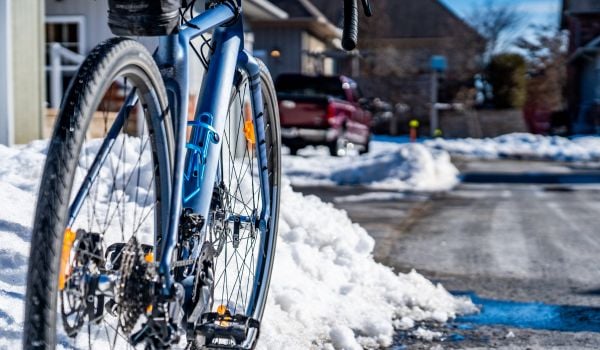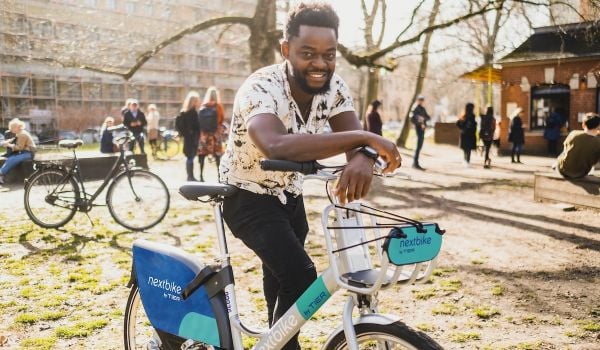Starting in the later half of the 20th century, every U.S. president from Richard Nixon to Barack Obama has been photographed riding a bike. As recreation, bicycling is a nearly ubiquitous experience for Americans, making a presidential bike ride as good a photo-op as kissing babies and shaking hands with blue-collar workers. Plus, riding a bike is just fun, and deep down presidents are probably still human beings who enjoy fun. Despite those decades of executive ridership, it wasn’t until the early ’90s that bicycling started getting its due as a viable form of transportation worthy of federal funding.
George H. W. Bush was the first president to include bike and pedestrian funding in a federal transportation bill. Signed into law in 1991, the Intermodal Surface Transportation Efficiency Act (ISTEA) recognized the potential for biking and walking to help mitigate congestion and air quality problems. It came on the heels of Bush’s Clean Air Act amendment, which aimed to mitigate urban smog and the impact of automobile emissions.
ISTEA gave bicycle and pedestrian projects access to federal money in a few ways. It stipulated that a certain portion of allocations must be reserved for “Transportation Enhancements (TE)” and bike and pedestrian projects were included as viable options. ISTEA created a new funding source called Congestion Mitigation and Air Quality Improvement Program (CMAQ). And it created the National Recreational Trails Act. Together they opened the door for thousands of new bike and pedestrian projects across the U.S. from rail trails in Idaho to pedestrian safety improvements in New Jersey.
“ISTEA was a game-changer for bicycling,” says Caron Whitaker, League of American Bicyclist’s vice president of policy. “By including funding for bicycling, walking and other local projects, the bill and the funding was a catalyst for local governments. Once they started to invest in bicycling and walking projects, communities began to see the benefits, and demand for the projects has increased ever since.”
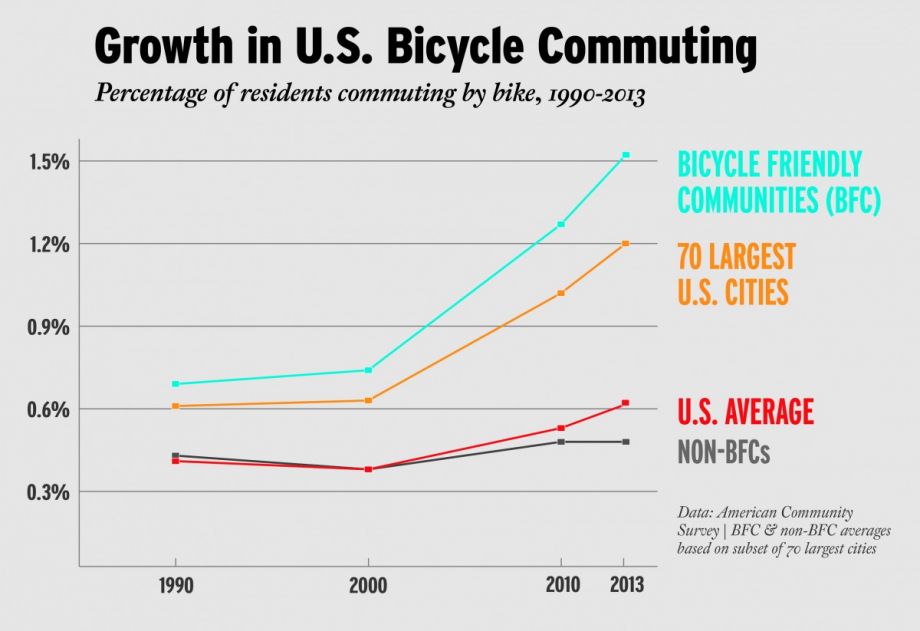
Prior to 1992, a grand total of about $40.7 million in federal funding had been allocated to bicycling and pedestrian projects. ISTEA provided $22 million to bikes and peds in 1992 alone. By 1996 it had hit $200 million in annual funding. Bill Clinton’s 1998 Transportation Equity Act for the 21st Century (TEA-21) expanded bike and pedestrian funding opportunities, stipulated that transportation projects must provide “due consideration for safety and contiguous routes for bicyclists and pedestrians” and authorized the Federal Highway Administration to develop a national bicycle safety education curriculum.
By the time George W. Bush signed the 2005 Safe, Accountable, Flexible, Efficient Transportation Equity Act (SAFETE), bike ped funding had doubled to about $400 million. Most signifcantly, SAFETE also created the national Safe Routes to School Program (SRTS) and allocated another $612 million in funding over a four-year period for SRTS programs around the country.
In the decade since SAFETE, federal bike and ped funding once again doubled to a little over $800 million annually. The 2009 American Recovery and Reinvestment Act briefly spiked annual funding to around $1.2 billion. Perhaps more importantly, it created the TIGER grant program, which has since allocated nearly $154 million to bicycle and pedestrian projects around the country.
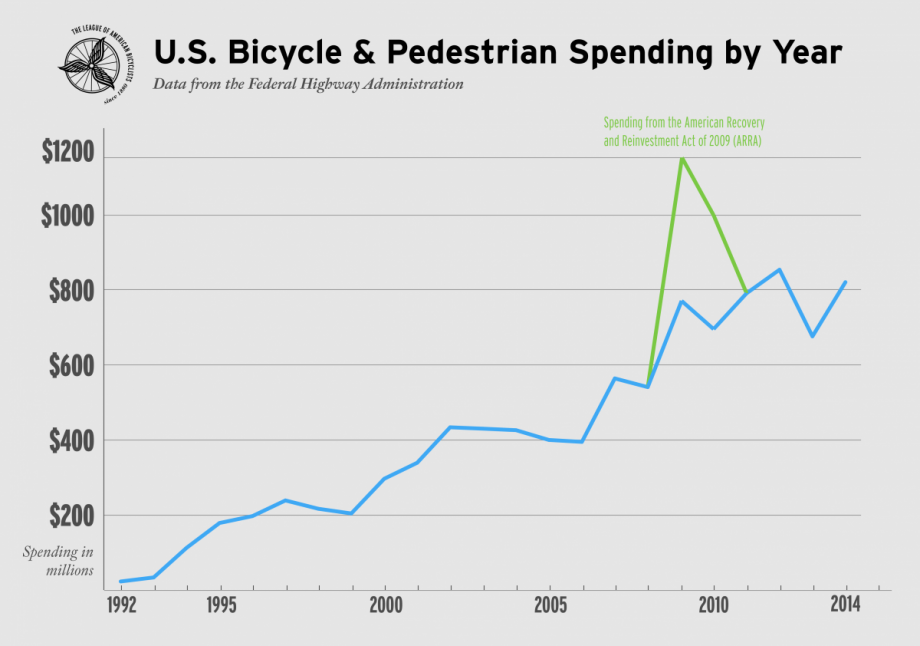
Whitaker says Obama has been one of the best presidents on bicycling issues. But his legacy will have little to do with funding he provided.
“When you look at Obama, his support for biking came through choosing the best two DOT secretaries we’ve ever had,” explains Whitaker. “We’d never seen initiatives on biking and walking the way we have with both [Ray] LaHood and [Anthony] Foxx.”
She says Obama’s transportation secretaries were the only to ever attend the League’s National Bike Summit and have attended every year since 2008.
Having bike-friendly transportation secretaries working under a directive to prioritize issues such as income inequality has changed the conversation about transportation on Capitol Hill.
“Foxx’s ‘Ladders of Opportunity’ initiative’ is looking at how low- to middle-income people are connected to their jobs, schools, health care,” Whitaker says. “At a recent Congressional transportation hearing, people were asking a lot of questions about the role transportation plays in the lives of American families and how that affects quality of life.”
Though TIGER was created by Congress, Whitaker says the Obama administration helped push multimodal projects, including bicycling and walking projects: “LaHood put huge emphasis on multimodal TIGER projects and did cost-benefit analysis on their economic development and health impacts.”
Of course, philosophical and verbal support only go so far without funding to actually improve bicycling around the country. With federal transportation funding set to run out in May of this year, there are some big question marks on the horizon.
Earlier this month, Obama proposed a $478 billion transportation bill. It doesn’t increase funding for bicycling and pedestrian projects, but it does contain a performance measure that prioritizes connectivity and how well communities can get from home to destination. It also emphasizes local control and decision-making power for mayors. Both of those bode well for bicycling projects in cities, Whitaker says.
Given Republican control of Congress, it seems unlikely Obama’s transportation proposal will pass, at least in its current form. Whitaker says there isn’t much else on the table. “It’s frustrating to know we’re going to run out in three months, we’re approaching building season, and there’s not a lot of momentum towards any solution [let alone] any long-term solution.”
The Works is made possible with the support of the Surdna Foundation.

Josh Cohen is Crosscut’s city reporter covering Seattle government, politics and the issues that shape life in the city.
Follow Josh .(JavaScript must be enabled to view this email address)








